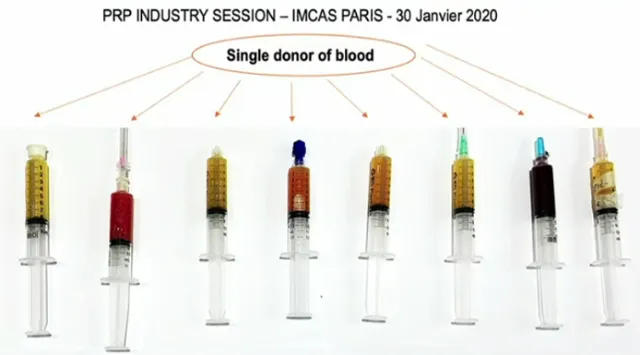What is PRP? Can Platelet-rich Plasma injections help you?
If you’ve just heard out about platelet-rich plasma, PRP, and are wondering what this treatment is all about, and whether it can help you, this is a good place to start. We’ll cover PRP in detail, including what it is, how it works, when and why PRP may NOT work, who is a good candidate (or not), and how to find the best type of PRP for your concern.
|
What is PRP, platelet-rich plasma? (official definition)
As you may guess from the name, Platelet-rich plasma is plasma that is “rich” in platelets. Plasma is the fluid in blood vessels. The normal concentration of platelets in blood is between 150,000 to 400,000 platelets per microlitre (µL). A microlitre is a cubic mm; there are about 35 microlitres per drop of blood. PRP is made by taking a blood sample and removing everything except the plasma and the platelets, then concentrating the platelets to a high level. Ideal PRP should have a concentration of at least 1 million/µL,1 but this is not guaranteed: PRP kits have been shown to vary from as little as 89,000 to as many as 2,100,000 /µL.2,3
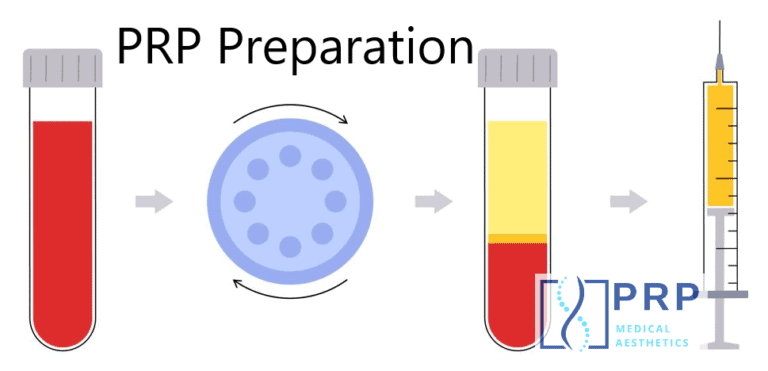
How do platelet-rich plasma injections work?
PRP, or platelet-rich plasma, harnesses the power of autologous (your own), growth factors to stimulate the body’s own natural healing process. A healthcare professional will draw a sample of the patient’s own blood, which is then processed in a special device called a centrifuge. Whole blood contains different types of blood cells: red blood cells, white blood cells and platelets. The concentrated platelets are rich in many different types of growth factors and cytokines which stimulate and promote wound healing and tissue regeneration. PRP injections are used by in many medical fields (e.g. dermatologists, sports medicine specialists, orthopedic surgeons, oral surgeons) for a variety of conditions to accelerate the healing process and promote natural tissue repair.4,5
What can be treated with PRP therapy?
There are studies showing that healing factors in PRP can benefit:
- Hair loss, including alopecia areata, male and female pattern baldness
- Musculoskeletal injuries: may speed up the healing process with torn tendons, ligaments and sports injuries
- Arthritis (especially knee osteoarthritis) by reducing inflammation
- Cosmetic procedures: Vampire Facial, Vampire Facelift to treat signs of aging
- Scars, including acne scars, keloids, and post-surgical scar treatment
- Sexual function, including erectile dysfunction (ED), female sexual dysfunction and dyspareunia
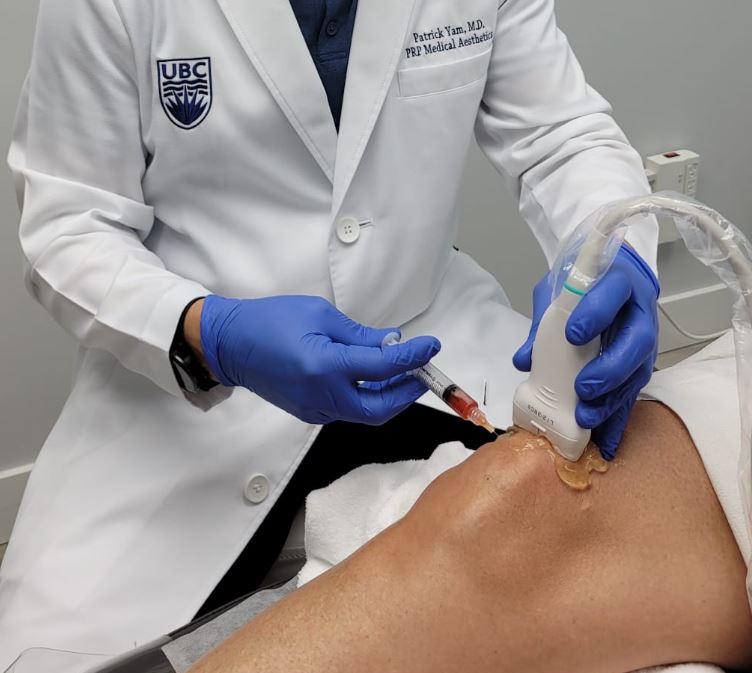
Who is a good candidate for PRP treatment: 4 factors.
There are 4 factors to consider regarding the overall effectiveness of PRP for any particular situation. These can be divided into medical conditions, patient factors, PRP factors, and physician factors.
1. Medical conditions that PRP works well for (according to scientific studies)
- Arthritis, especially mild to moderate knee osteoarthritis
- Alopecia (hair loss), especially androgenetic alopecia and alopecia areata
- Acne scars
- Erectile dysfunction
- Stress urinary incontinence in women
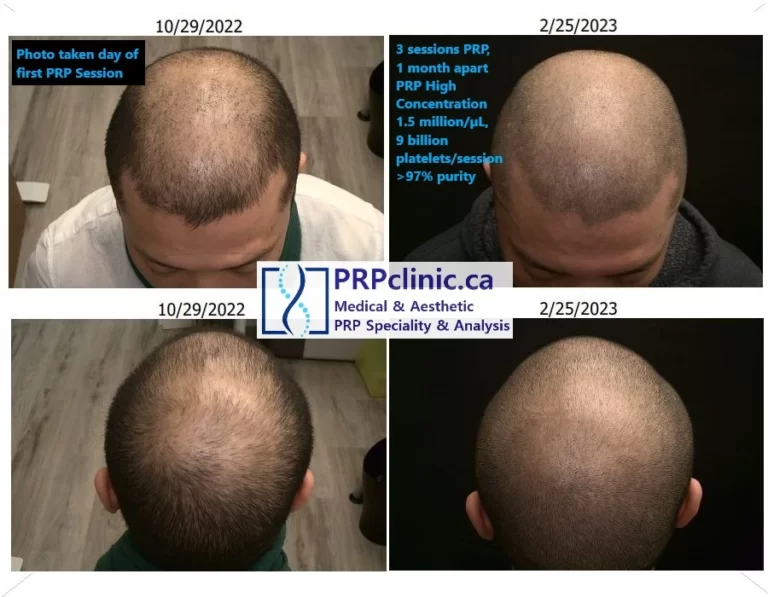
2. Patient factors that help PRP to work better
- Younger patients, in general respond better to PRP. They have blood samples that start with higher platelet concentrations and more growth factors. Note: This does not mean that PRP does not work for older patients, but a higher platelet concentration may be required for the same benefit. This can be accomplished with careful testing during the PRP procedure.
- Patients not taking any medications like ibuprofen which interfere with platelet function
- Patients not using alcohol or smoking which may interfere with platelet function
- Patients without other underlying conditions which may interfere with platelet function
3. Type of PRP: What to look for The 3 C’s of good PRP
All PRP is not the same, there are 3 important characteristics: concentration, composition and count. We have a useful page comparing different PRP systems here.
Concentration of platelets in PRP should be at least 1 million/µL for most conditions (and should be checked by a hematology analyzer). Compare this with the starting blood sample that contains usually only 150,000 to 330,000 platelets/µL.
Composition (or purity): PRP should be high in platelets (>95% pure) and free of other blood components (e.g. RBCs and leukocytes)
Count (or dose): Dose of platelets is determined by the concentration and the volume of PRP injected. For example, 1mL of PRP with a platelet concentration of million/µL equals a dose of 1 billion platelets. A procedure like PRP hair restoration needs 6-9 billion platelets, while joints may require even higher doses to be effective.
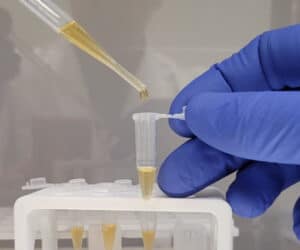
4. PRP Provider skill. Find a PRP Expert.
- The PRP expert should be know about the different types of PRP, e.g platelet-rich fibrin, leukocyte-rich vs leukocyte-poor, platelet lysate, single vs double-spin, activated PRP vs non-activated PRP, how many treatment sessions are recommended etc. Knowledge about adjuvants like ACell, exosomes, etc including when and how to use them is also essential.
- The PRP expert should be up to date with current research as PRP is still considered experimental for many conditions and recommended protocols are changing constantly.
- The PRP expert should not simply offer PRP to any patient who wants to receive it. Instead, careful consideration should be taken, including a medical history, physical exam, and lab testing when needed to look at other underlying conditions which may need to be treated.
- The PRP expert should be using a PRP kit and machine to separate the platelets which is approved by Health Canada or the FDA (food and drug administration).
- The PRP expert should know the proper way to administer the treatment. This may include using ultrasound to guide the injection, eg. to make sure the platelets are then injected directly into a joint space or bursa.
What are the advantages of platelet-rich plasma therapy?
- Very low risk of allergic reaction with autologous platelet-rich plasma, since it comes from your own blood that contains the platelets.
- Non-surgical, no scars and much faster recovery time.
- PRP is antimicrobial so the risk of infection is quite low.
- Safe and effective for a variety of conditions, including muscle injuries, tissue repair, pattern baldness, knee sprains, and more.
- Unlike cortisone injections, researchers have found that PRP does not lead to accelerated joint breakdown over time.6
- Efficacy of PRP: has been shown more effective for knee osteoarthritis versus hyaluronic acid or cortisone
What are the disadvantages of PRP therapy?
- Many uses of PRP still need more high quality research (e.g. randomized, double-blind, placebo controlled, prospective studies).7
- Multiple treatments may be needed before knowing whether PRP is really working or not (especially true for PRP hair loss treatments).
- The concentration of platelets and dose of growth factors is not consistent, even in studies.
- Claims are about PRP concentration are often not true, yet few know about this because PRP is hardly ever tested just in the clinic setting.
- Some PRP kits have been shown to actually lead to LOWER platelet concentration compared to baseline. These kits create platelet POOR plasma (PPP, lower than baseline), yet they are still widely used due to false claims and lack of testing in clinics. Studies have shown that such kits could actually lead to harm (e.g. more hair loss instead of hair growth).
- Studies have shown up to a 2100% difference in platelet concentration between different PRP kits.
Risks and side effects of platelet rich plasma?
Although PRP is free of anything that would usually cause major side effects, there are a few things to be aware of. Most of these can be reduced or eliminated with proper technique and preparation:
- Pain when PRP is injected, especially true to scalp injections. Lidocaine nerve blocks is very effective in reducing or eliminating pain of PRP injections.
- Mild soreness and bruising after the treatment
- Feeling lightheaded during the blood draw.
What are the different types of PRP available?
Preparation of PRP is performed in the clinic on the same day as the procedure, and can take anywhere from 5 minutes to over an hour. After a blood sample is collected, a centrifuge is usually used to separate the platelets in plasma from the other cells (red blood cells and leukocytes). The cleaner the separation, the higher the purity (see composition, above). Most PRP is “Single-spin”, meaning that only one centrifuge cycle is used before collecting the PRP for use. To obtain higher concentration, a “Double-spin” process can be used, which can produce much higher levels of concentration, but it also takes more time, effort and skill to produce double spin PRP.
How to know if you’re getting good PRP: Testing is essential.
As mentioned above, good PRP will have 3 characteristics:
- High concentration (over 1 million platelets/µL)
- High composition of platelets (over 95% of cells in the plasma are platelets, less than 5% are RBCs or WBCs)
- High total count or dose of platelets. Usually this number would be in the billions and can easily be calculated, if the concentration is known. Here’s some examples:
- 6 mL PRP x concentration of 1 million/µL = 6 billion platelets dose (e.g. Arthrex)
- 6 mL PRP x concentration 100k /µL = 600 million platelets dose (e.g. Regen, Eclipse)
- 6 mL blood sample x 200k /µL = 1.2 billion platelets dose
- Testing PRP before use with a hematology analyzer is the only way to be sure of the concentration and composition you are getting.
For more information, please see this post on the best type of PRP system, which even includes a detailed spreadsheet of the platelet concentrations of PRP kits from different manufacturers.
Conclusion: PRP can help you heal in many ways, but consultation and quality is important.
As PRP is becoming more popular for a variety of different conditions, many clinics are starting to offer it. It seems reasonable, since PRP can help heal tissue without the risk of surgery or other treatments (e.g. cortisone injections may lead to worsening arthritis, or even tendon rupture). But before having PRP, it’s important to have a full medical consultation with your health care provider to consider whether it should be offered. Are there underlying conditions which should be addressed? For example, sometimes hair loss (alopecia), may be related to a thyroid imbalance or iron deficiency. These conditions should be treated before considering PRP. Another example would using PRP for arthritis. The severity of the arthritis should be taken into consideration, as well as other potential treatments (e.g. physical therapy, hyaluronic acid, viscotherapy, other medications used to treat).
Doctors and patients can use PRP injections to help heal tendons and ligaments, (including chronic tendon injuries), reduce pain, improve wrinkles, support cell growth, reduce hair loss, and more. The safety and effectiveness of platelet-rich plasma is well established a number of conditions, with a large amount of supportive studies, (eg. PRP for hair restoration or knee osteoarthritis). However, it’s important to keep in mind there are also areas with little evidence to show benefit. PRP is amazing, but should not used in every situation.
Book a consultation with our PRP expert
If you’re wondering if PRP might help your situation, please feel free to book a consultation to discuss your specific concerns with our expert. Dr. Yam has been working with PRP for almost 10 years and has taught in international conferences on PRP. We understand and offer all types of advanced PRP treatments, including PRP, PRF, platelet lysate, ACell and more. Additionally, we understand how PRP can vary between different kits, patients, and blood samples. This is why we use a hematology analyzer to carefully test all the PRP we produce to ensure it has the right concentration and quality for optimal results.
Academic References
- 1.Marx RE. Platelet-Rich Plasma (PRP): What Is PRP and What Is Not PRP? Implant Dentistry. Published online December 2001:225-228. doi:10.1097/00008505-200110000-00002
- 2.Fadadu PP, Mazzola AJ, Hunter CW, Davis TT. Review of concentration yields in commercially available platelet-rich plasma (PRP) systems: a call for PRP standardization. Reg Anesth Pain Med. Published online April 16, 2019:652-659. doi:10.1136/rapm-2018-100356
- 3.Magalon J, Brandin T, Francois P, et al. Technical and biological review of authorized medical devices for platelets-rich plasma preparation in the field of regenerative medicine. Platelets. 2021;32(2):200-208. doi:10.1080/09537104.2020.1832653
- 4.Hesseler MJ, Shyam N. Platelet-rich plasma and its utility in medical dermatology: A systematic review. Journal of the American Academy of Dermatology. Published online September 2019:834-846. doi:10.1016/j.jaad.2019.04.037
- 5.Samadi P, Sheykhhasan M, Khoshinani HM. The Use of Platelet-Rich Plasma in Aesthetic and Regenerative Medicine: A Comprehensive Review. Aesth Plast Surg. Published online December 14, 2018:803-814. doi:10.1007/s00266-018-1293-9
- 6.Nunes-Tamashiro J, Natour J, Ramuth F, et al. Intra-articular injection with platelet-rich plasma compared to triamcinolone hexacetonide or saline solution in knee osteoarthritis: A double blinded randomized controlled trial with one year follow-up. Clin Rehabil. 2022;36(7):900-915. doi:10.1177/02692155221090407
- 7.Cai Z, Cui Y, Wang J, et al. A narrative review of the progress in the treatment of knee osteoarthritis. Ann Transl Med. 2022;10(6):373. doi:10.21037/atm-22-818

